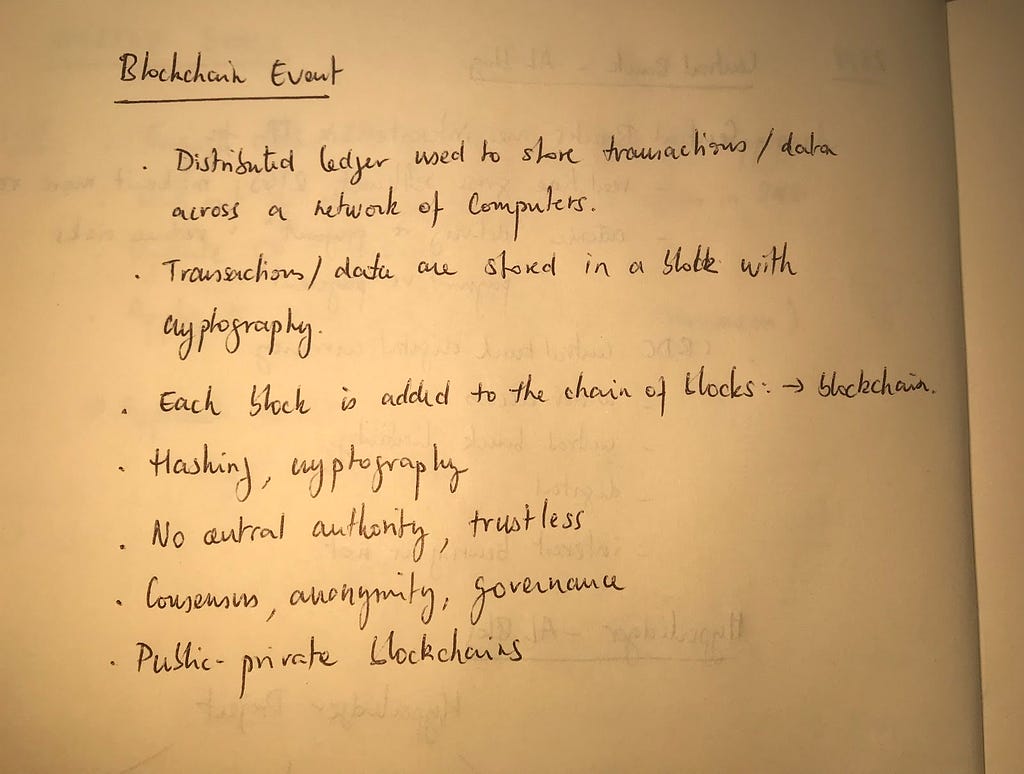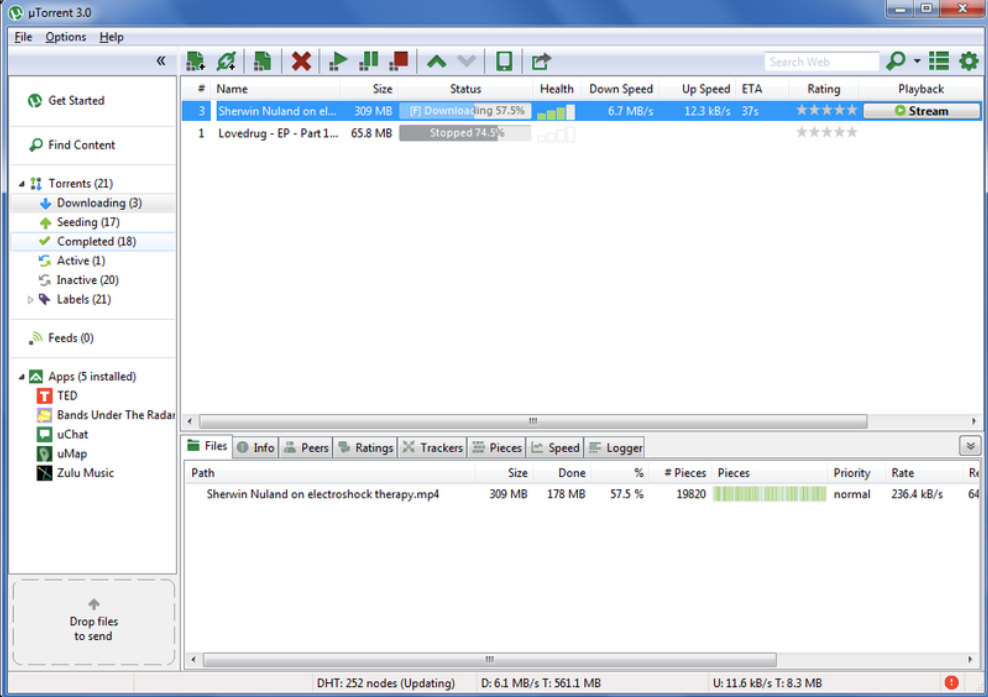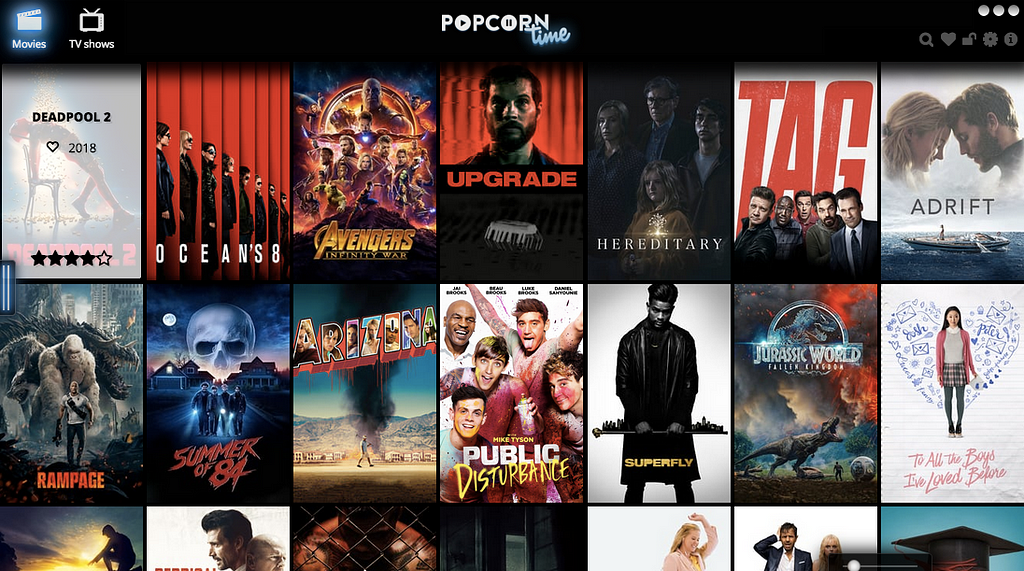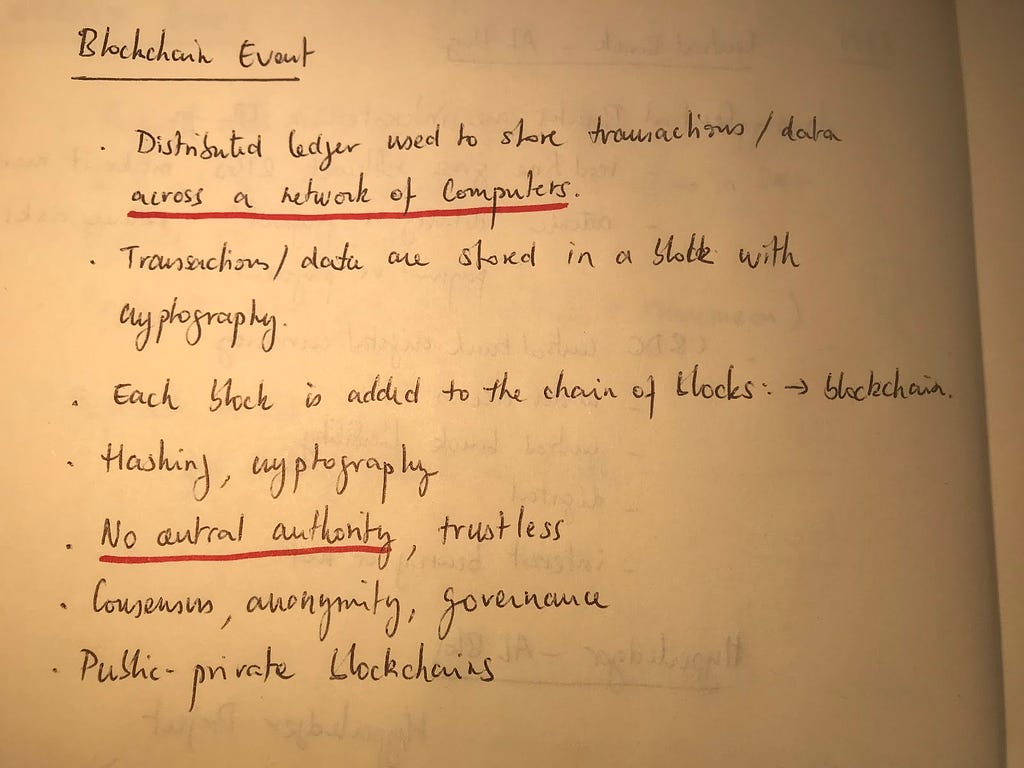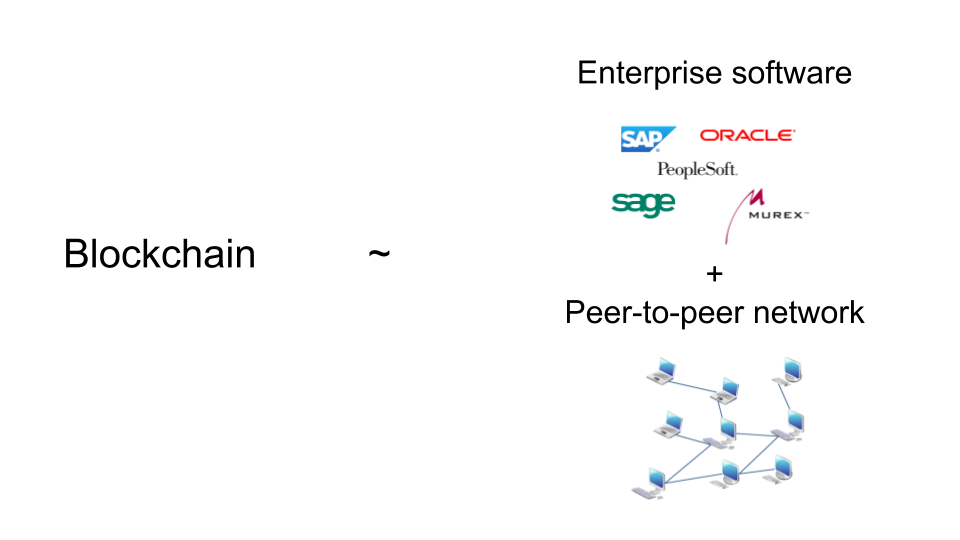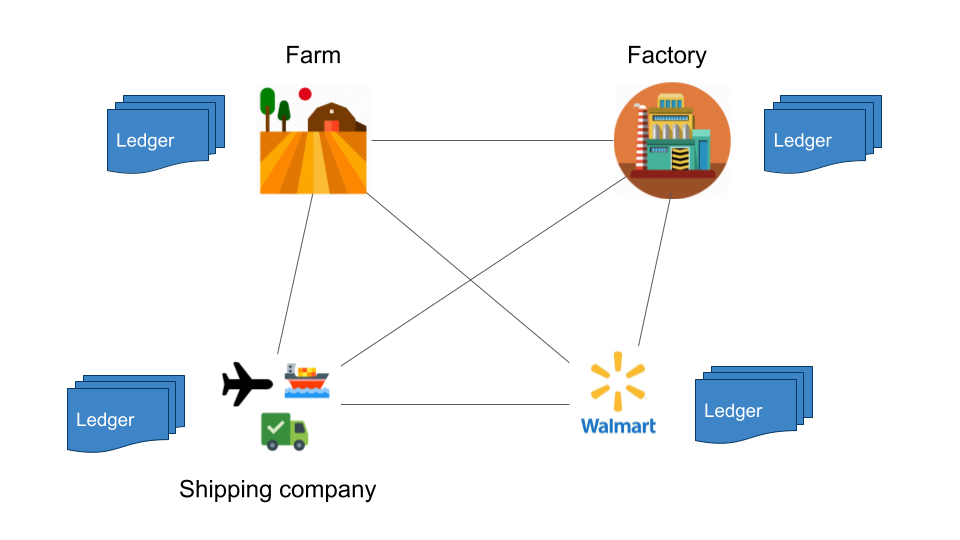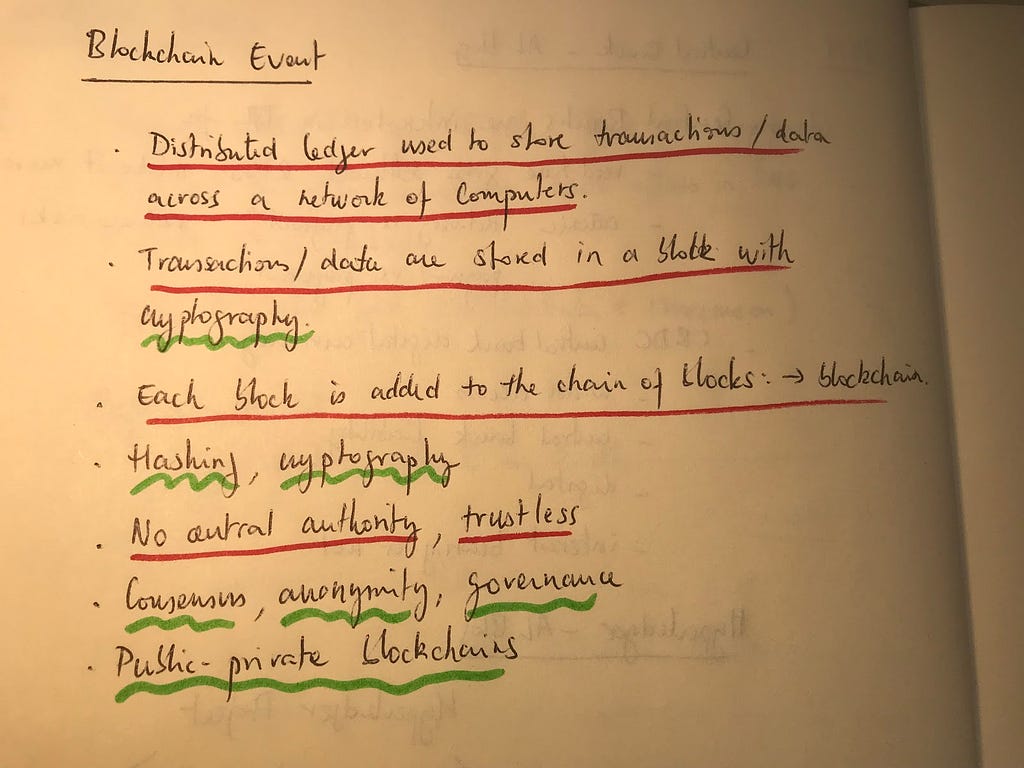Latest news about Bitcoin and all cryptocurrencies. Your daily crypto news habit.
The purpose of this article is to make sure that blockchain isn’t a scary word to you anymore.
Scary for those who aren’t sure what it is: they are scared that they wouldn’t know what to say when the word pops up in a meeting or at a social gathering.
Scary as well for those who know exactly what it is but find it daunting when they need to explain it in a presentation to colleagues, pitch it to their superiors/ investors or convince clients etc.
I feel the reason is that most of the time, people who understand blockchain describe it by starting with a technical definition. Instead, my goal is to build a mental image of blockchain in your mind, a feel for it. So you can connect it with things you already know. It took me many hours and a lot of effort to build my own intuition so I hope to dramatically accelerate the process for you.
I decided to choose simplicity over technical accuracy. So by the end of the article, beginners will be very comfortable with the notion of blockchain and able to comfortably and clearly explain the subject with their own words to their colleagues and friends.
If you are a blockchain expert, this piece will probably make your hair stand on end a few times along the way. But please bear with me. My hope is that you might find a few examples and analogies useful to explain notions around blockchain in a accessible and engaging way to your professional audience.
Social pressure and awkward conference
As promised, I won’t start with any definitions nor mysterious jargon. As you shall see, those definitions will naturally come to you. And I personally guarantee that you will be comfortable with the notions covered in this piece. Otherwise, (shame on me and) I’d be happy to clarify any questions you’d have via LinkedIn messages or email.
For this, please put yourself in the shoes of a non-techie person who felt in the past year or two that she/he had no choice but to understand blockchain, (buzz)word that everyone has been talking about.
It all started when you were seeing the word more and more often: from the covers of Time magazine, Forbes, headlines of the Wall Street Journal, your Facebook and Linkedin feeds. By sheer curiosity, you browsed through them and thought “wow, they say it’s going to change the world. It must be a big deal!” or “The biggest thing since the Internet. Mmmh this big? Really?”. From being just curious, you started to become intrigued. Then you came across an ad for a small Blockchain conference. You decided to give it a go.
So you went to the conference, which started with a “Blockchain advisor” giving a 101 on the subject. You were completely lost. And at the end of the talk, you could feel a massive headache coming on. There was then a networking session. You weren’t keen to mingle because the only question you could think of was still “mmmh what actually is blockchain?”. You thought you’d rather not embarrass yourself so you left.
To make sure your time at the blockchain event wasn’t a complete waste of time, while there you had written down definitions the speaker mentioned and a couple of keywords.
(A more readable version than my handwriting:
- Distributed ledger used to store transactions/ data across a network of computers.
- Transactions/ data are stored in a block with cryptography.
- Each new block is added to the chain of blocks -> blockchain.
- Hashing, cryptography
- No central authority, trustless
- Consensus, anonymity, governance, public-private blockchains)
With hindsight, you could intellectually understand some of the definitions given in the talk but you couldn’t relate to any of them.
You’re sure Google and Wikipedia will clarify it all
Later, you had the brilliant idea to google the topic properly. The Wikipedia article was truly horrible. You then browsed through a lot of articles, blog posts of various levels of technicality.
But you were tired. You wanted to find the dream article that would just gently hold your hand and walk you smoothly through what you needed to know. Well needless to say, you never managed to find such an article.
The questions you had in your head were: “What is blockchain? Is it something I can download on your computer and start using? Like Dropbox? Or is it more of an online service like Facebook where I sign up online and get started? Or is it a new programming language? Or is it a new way of organising processes efficiently like Six Sigma? Or maybe it’s a mixture of everything…? “
Total confusion.
You gave it one last shot before calling it a night. Searched other videos. Finally this video about a case at Walmart came up:
It was a small ‘hallelujah’ moment in your head. This is where it clicked for you for the first time. You finally felt you started to see a piece of the animal!
What clicked? Well, you realised that blockchain is probably some kind of enterprise software used to make real-life processes more efficient, less time-consuming etc.
This is where a mental image of blockchain started to build in your mind. This image of enterprise software worked for you because you’re familiar with it.
A situation where you’ve experienced enterprise software is when you want to apply for holiday leave in your current or previous company. Most likely, it works as follows:
- You apply via an online system (that web link that the Human Resources department gave you at some point).
- Your application is sent to the HR department and triggers an email notification for your superior to approve it (or not) online.
- Once approved by your superior, HR might have to approve it too.
- You then receive an email notification of the approval and you can start planning your holiday.
So some software solution is in place in your company to manage the HR process from the moment you apply for holiday leave to the moment you see it being approved. If you go back to the Walmart case, similarly blockchain is basically a software solution for managing the tracking of fruits and vegetables from production to consumers.
Ok, so you told yourself: “ let’s hold on to this tiny piece of intuition”.
After this small epiphany, when a colleague or friend randomly asked you about blockchain, you would say “oh it’s like a SAP 2.0” or “it’s just the future of enterprise software”. Most of the time it did a good enough job to satisfy the person’s curiosity. But deep down, you weren’t super confident about my intuition because you still didn’t have a good feel for most of it: immutable, no central authority, consensus, hashing etc.
BitTorrent memories
Do you remember downloading songs, movies illegally in the 2000’s while wondering whether the police would show up one day to arrest you? When you were fine to wait 6 days for a movie to completely download? When you were then praying for the progress bar not to stop at 99% forever?
Those memories came to your mind after a friend of yours recommended the TV series True Detective because it was “the best show of all time! A classic”. You gave it a go. It wasn’t on Netflix. So you checked on Popcorn Time and found it.
You use Popcorn Time for streaming and downloading movies and TV series. It uses BitTorrent technology. And as opposed to what you used in the 2000’s, Popcorn Time is very user-friendly like Netflix, Apple TV etc.
While the show was loading, your mind was wandering:
“Wow it’s loading really fast! So many people are sending me the file right now. A lot of people are watching this. I’m glad Popcorn Time exists, it’s so good. How come they still haven’t gotten shut down? Yeah it must be hard to shut them down since it’s a peer-to-peer network. It’s not like Popcorn Time keeps all the movies on their servers and… Wait hold on… peer-to-peer network… it’s like decentralised…Holy Jesus!!!!”
It clicked. It was a big ‘hallelujah’ in your head this time.
You immediately rushed to grab your notebook and jumped into the notes you took from the conference. Suddenly, the part “across a network of computers” became crystal clear. Clear in the sense that you could finally connect it with something you were familiar with, which was BitTorrent. So the mental image you had of blockchain started to expand: you were imagining it as some type of enterprise software installed on a peer-to-peer network.
You started to test your new mental image against the scary terms. You stopped on “across a network of computers” and “no central authority”. You underlined both.
You thought: “Indeed, Popcorn Time has no central authority because it’s based on a peer-to-peer network. The peers in the network are users’ computers, those downloading movies. Some people are maybe not aware of this but once you download a movie on your computer, the movie file is used to send a copy of it to another user wanting to download the same movie after you.”
“In other words, you didn’t technically download True Detective from Popcorn Time but from other users who happened to have it on their personal computers. Popcorn Time is just a platform that links the computers of all users together. If you compare this with Netflix which is 100% centralised, you can see the difference. Netflix alone decides which movies are available in which countries. When you start a movie, it’s Netflix that’s sending you the movie, not another user. So if Netflix had only you as user, it would still work. On the other hand, because Popcorn Time is decentralised, if it only had you as a user, you’d just be able to download movies that you already have — in order words, Popcorn Time would be useless.”
You didn’t know it yet at that time but the comparison with peer-to-peer BitTorrent turned out to be a great analogy to help you understand the remaining components of blockchain.
To test your intuition on “centralised vs decentralised”, you tried to find another obvious difference between the two.
“For instance, Netflix has full control over how fast movies load. If they want them to load faster, they add more power to their infrastructure. Plus notice that the loading speed is the same for all movies. This is not how it worked with BitTorrent (same as Popcorn Time): recent popular movies loaded very fast but some old, indie movies would take ages. This is because it depended on the number of users (the peers) who had the movie on their computers. It didn’t depend on BitTorrent or Popcorn Time’s goodwill at all. Even if they wanted, there was no way for them to force users to keep old movies on their computers. There’s no central authority in a decentralised system.”
At this point, you felt that your intuition on blockchain was building up with a good feel for the notions of peer-to-peer/ decentralised network/ no central authority vs centralised network. When you combined this with ‘enterprise software’, you could then imagine blockchain as some kind of enterprise software sitting on a peer-to-peer network, not specifically for sharing movies but for enterprise activities such as tracking fruits and vegetables or managing employees’ holiday leaves.
By the way, True Detective was a great show. Only season 1 though. you would recommend it to anyone who hasn’t already seen it.
Ready to get your hands dirty
You were happy that you were starting to wrap my head around this animal. Almost relieved.
But you kept wondering: why does Walmart need blockchain to track fresh produce? In the sense that there’s surely some existing non-blockchain software that could do the job.
The underlying question you had was actually: what extra benefits does blockchain bring to the table compared to non-blockchain software?
At this point, the frustration you felt after the conference turned into excitement. You really wanted to find out once and for all. So you decided to take it seriously: you would break things down, study each piece and put the whole story together.
So you took my notes again and picked one concept among those you hadn’t underlined yet. You then muscled through technical and non technical articles, white papers, blog posts, videos etc. When you felt you had a good feel of it, you would underline it in your notes and move on to the next one.
It was indeed a continuous and conscious effort of yours. The rest of your journey had nothing to do with social pressure or random videos you came across. No apple fell on your head when you were napping under a tree. No more awkward experience at a conference. No more TV show to recommend. No more Hallelujah moments.
It was pure motivation and perseverance. How beautiful!
So you tried to grow your intuition on the core notions of blockchain:
- Blocks and chain
- Distributed ledger
Blocks and chain
So far, you had focused your energy on getting an overall feel of blockchain. It was very high level, big picture. You knew it was likely to look like some kind of enterprise software sitting on a peer-to-peer network.
From that moment on, you would get closer to it, zoom into its very components to get a clearer picture.
So you started with the “blocks and chain” part. After some research, you tried to mentally summarise what you found out:
“So blockchain is made of blocks which are chained one to another. No tricks here.”
“Each block is used to store information. What kind of information? Any kind really. Someone could store information on table reservations if you work in a restaurant. The HR department of my company could store there all information on staff days off. Walmart could store information tracking its mangoes from farm to consumer. Literally any type of information — personal, medical, financial, legal etc. Sounds fair.”
“Then when a block is full, new information gets stored on a new block. And these 2 blocks are chained together. If someone tries to get rid of a block or replace it with another one, the chain is broken and it will be plain for everybody to see that it’s been tampered with.”
Then a another genius moment of yours happened:
“Hold on. What if blockchain were some sort of notebook? A block is a page. Someone can write any sort of information they want on it. Pages are bound together. If they rip off a page, it would be quite noticeable. If they want to replace it perfectly with another one, they’d probably have to unbind it (breaking the “chain”) and most likely it would be noticeable too. Not bad… I’m a genius really!”
But you realised that something didn’t seem to quite work with your notebook analogy. Going back to the blocks, only new information could be added on it. In other words, what’d been stored on previous blocks could not get deleted or changed. So once information was added on a block, it was permanent.
Well you then thought: “Blockchain is just a weird notebook: it’s a normal notebook but only permanent ink can be use, no pencil and it’s impossible for anyone to change what has been written on previous pages.”
Less genius but you were still pretty proud of yourself.
Not for long. You actually didn’t feel comfortable with this impossibility of writing on previous pages of a notebook. It just seemed slightly superficial to you. There wasn’t such a thing in the world!
After a few minutes of intense frowning, this hit you:
“When someone writes something on a block, it’s like releasing a press release to the world. They can’t change it once it’s released. If they made a mistake, they have to release a new one with updated and accurate information but the first version is still out there.”
Real genius indeed. Hehe.
(Please remove yourself from this character from now on.)
Now, I want to give you a feel of concrete situations where this weird notebook can be useful.
For this, lean back, take a deep breath, forget that genius for a few minutes… fast forward and imagine now that you have just retired. Take a moment to imagine becoming that wiser, stress-free version of yourself. If you are already retired, then that’s perfect!
So you have retired and moved to a new neighbourhood in the countryside. Peaceful and relaxing. You truly enjoy your free time but you want to do something to get to know your neighbours more and make new friends.
You get an idea: you have always had a passion for poker and you decide to host poker tournaments in your house, a sort of little casino. Why not? Let’s see if it helps kickstart your new social life.
(Wink wink to those who read my article on cryptocurrencies.)
It was a genius idea (again)! Your weekly tournaments have quickly become super popular. Hundreds of people join in and have lots of fun. Everybody knows you now. People don’t bet big money, $50 each. So if there’s 100 players joining, that’s $5,000 of cash sitting in your house during each tournament.
Caring for the security of your poker friends and yourself, you decide that no one would bring cash to the house anymore. Instead, you will keep track of everyone’s account in a notebook then everything will get settled with cash at the end of each month. It’s a bit more work for you but you don’t want anyone to get robbed.
Being old school and smart, you decide to write the accounts down on a notebook. Plus you use permanent ink so that no one can accuse you of changing the numbers. Indeed, if you used Excel instead, you could change results of past tournaments and no one would be able to tell.
Here you start to see the advantages of using this notebook compared to Excel or a blackboard. A notebook naturally provides history. And the history becomes even more true to reality if you (magically) make sure that you can’t add information to previous pages. This builds trust and transparency among your poker friends.
Things you wouldn’t be able to achieve if you just wrote things down on a blackboard or Excel and updated it every week. A blackboard system would be possible only if all your friends trusted you 100% and never had an ounce of doubt — not the real world.
One day, you wonder: “What if you were to lose your notebook? It would be quite a mess… What if someone steals the notebook and manages to perfectly forge it so that no one can tell? Your notebook system surely isn’t perfect. It would really be a massive mess and you might lose your new friends forever…”
That’s when you start to freak out.
Luckily another (unconventional) idea comes to your mind.
Distributed ledger
Your new idea is: you will simply make copies of your notebook at the end of each tournament and give a copy to the 100 players who first joined the club — yourself and 99 others. So there’s 100 identical notebooks now.
A lot of extra work indeed but you can’t take the pressure of being responsible for all this. The idea was for you to relax remember? So the additional work is just the price to pay for peace of mind.
If you think about it, this is another great idea of yours! Since everyone has a copy of the notebook, no one would or could ever think that you did something to the records. You couldn’t be stupid enough to forge your own notebook knowing 99 players would be able to tell easily since they now have the original version themselves. You don’t need to rely on their trust anymore. And it feels all good and relaxing again.
Plus, in case your notebook disappears, nothing would get lost. There’s 99 other copies.
If someone steals your notebook, perfectly forges it and puts it back, you would compare it with the others and realise that it’s been forged. No one would argue (it’s 99 vs 1). You would then updated it with the accurate records. People would believe that it wasn’t you who forged it because there’s no point to do so.
Basically no one needs to trust anyone anymore. But everyone trusts the system. How beautiful is that?
Zooming out of your retirement story, the second genius idea you had is in fact a distributed system. Because it’s a system where a number of participants (100 here) holds each an updated version of the same notebook. Compared to when you were the only one to hold the notebook, that system then was centralised. That system put you in a position of responsibility and power where you could make mistakes or do bad things and not get noticed or caught. That’s why you needed people to trust you to do the right thing.
In other words, by moving into a distributed system, you stop being the central authority of “who owes whom how much?”. There’s no trust needed anymore between players but they trust the system even more so.
Now you can see how powerful such a system can be. You essentially built a blockchain-like system with notebooks. Blockchain is indeed a distributed system (not a peer-to-peer system as your image based on BitTorrent suggested it).
This is where the power of blockchain comes from and people often call blockchain being trustless. Actors don’t need to trust each other because the blockchain system naturally creates trust and transparency among them.
What’s the difference with the peer-to-peer system of BitTorrent? Every user had movies on their computers but not the same ones. In other words, they had different versions of the notebook. So BitTorrent was decentralised but not distributed. So there wasn’t trust among users: remember that you were scared to download viruses from other users.
The last scenario I want to look at with you is: what would it then take to cheat this system of 100 notebooks?
Well forging one notebook is not enough. Neither is forging 2. But you can see that if a significant number of notebooks present the same version A and the rest, a version B, people will start to debate which version is correct. That means that in order for people think that your forged version is the real one, you need to be able to forge a minimum of 51 notebooks — the majority basically. That’s a tremendous amount of work compared to the case where only you had that one notebook. And forging 51 notebooks doesn’t even guarantee that the community would agree on your version.
A few words on proper blockchain jargon. It’s important because in the real world, all poker tournament records will obviously not be stored on notebooks. Instead, they are stored on computers connected to each other. Those computers form a network and each computer is called a node.
There’s another difference compared to the real world. In reality, people with malicious intents or hackers only need to hack 51% of the nodes of a blockchain network at the same time and their forged version becomes accepted by the entire network as the real one. You might think it’s doable so it’s not very secure but it’s extremely hard to do so in practice. For instance, the most famous blockchain — the one used for Bitcoin — has thousands of nodes. So it’s nearly impossible because it doesn’t make sense financially to attack even half of them simultaneously: it would cost more than what you would get.
Now combine the security advantages of being distributed with the security provided by the ‘blocks and chain’ structure seen in the previous section and you can imagine how secure a system blockchain is.
The major downside is to have to maintain 100 notebooks and keep updating it. It’s very inefficient but it’s the price to pay.
Another note on jargon. It’s common to define blockchain as a ledger, which is an accounting term. The reason is probably that the most famous blockchain is used for financial transactions — Bitcoin.
(Just to be 100% clear, Bitcoin and blockchain aren’t the same thing. Blockchain is the technology that can be used to store any type of information in a very secure way hence a wide range of applications. Bitcoin is the most famous application built with blockchain technology. You could set up your own real blockchain to replace the 100-notebook system and call it whatever you want — Casinochain maybe. I explain in more detail the difference between blockchain and Bitcoin in my previous article on cryptocurrencies.)
Let’s have a brain massage now
If you made it this far, you should be proud of yourself. Well I am (proud of you).
You now know pretty much everything I wanted to share with you in this piece. And you should have some solid intuition of blockchain at this point. (Yayyy!)
Let’s simply recap and summarise it.
Blockchain starts with a digital notebook, commonly called ledger, used to store information. The ledger is made of blocks chained one to another. The information is stored on these blocks. The ledger itself is stored on a distributed network of computers called nodes. Each node contains the same most updated version of the ledger.
So blockchain is basically a piece of software used to store information and installed on a distributed network of nodes.
This matches our first intuition of it being some kind of enterprise software sitting on a peer-to-peer network.
In reality, it can be enterprise software if you store HR information or Walmart fruit supply information etc. Or it can be software for the general public — Bitcoin and others. Plus the network isn’t peer-to-peer but distributed.
Overall the main takeaway is the high level of security and transparency that blockchain naturally provides. This is achieved by the combination of:
- the blocks and chain structure and
- the distributed network.
It sounds easy (or easier) now, right?
Walmart and beyond
Let’s briefly apply what we know to the case of Walmart. You were wondering what extra benefit using blockchain would bring — compared to non-blockchain software. You probably have some sort of answer to this question now. But let’s break it down one last time.
To set the scene, the following information on mangoes will be stored on the blockchain software:
- Which plantation it comes from, harvest date, organic certificate or not,
- Which factory packaged it, how long it takes,
- Which truck, plane or ship transport it, distance travelled, how long it takes,
- When does it arrive in the supermarket, how long has it been there for.
The ledger is stored across 4 nodes, each actor owns one node — a computer: plantation, factory, shipping company and Walmart. So each actor adds info related to its activity and the 3 other ledgers get updated instantly.
First, the blocks and chain structure added to the distributed network of blockchain would make information on mangoes very transparent and secure from plantation to consumers. Consumers would instantly know which organic farm produced them, how fresh they are and distance travelled. Today, we as consumers surely don’t have access to this amount of information at the supermarket.
Plus, since it’s distributed, all information contained in the ledger isn’t only available to consumers. Blockchain makes it available to all the actors. So there’s transparency and built-in trust across the supply chain.
For example, Walmart doesn’t need to trust the factory on the organic origin of the produce. This piece of information is stored on the ledger. Nor do they need to trust the shipping company which sometimes claims that they’re late because the factory was late. Because everyone can clearly see on the ledger when the shipping company received the produce from the factory.
Notice that we got transparency on information related to timestamping and organic/non organic. If actors want to track CO2 emissions to showcase the ‘greenness’ of the produce to consumers, they can track and add CO2 emissions to the ledger at each step. This could benefit factories or shipping companies who invested in environment-friendly equipment. Today, there’s no way such companies could convey their approach to end-consumers (it may be one of the reasons most of them don’t care much about being green).
Now, is it possible to build a system presenting the same benefits of security, transparency and trustlessness but with existing non-blockchain technology?
I’m pretty sure that you could if you really want it. But my guess is that it would be more messy, more expensive to build and maintain and less secure. Imagine doing your 100-notebook system with blackboards: you would have to use permanent white ink and buy new blackboards as you go along and have the same thing happening in another 99 houses. You could but you wouldn’t. None of the other players would agree to store a bunch of blackboards in their homes for this.
Without going down the route of duplicating blackboards, you could store the notebook in a safe. Then who will keep the keys? Shall we make copies of the key and give it to everyone (that’s a distributed-ish system of keys by the way)? What if the safe gets stolen? As you can imagine, questions about security and trust keep coming back until you find someone everyone really trusts to hold that central authority.
Just think of your bank, your government, your doctor or your Gmail account. You trust each of these organisations not to mess around with your personal information that they hold for you: balance of your bank accounts, your tax records, your medical records and all your emails. And history shows us that these highly secured organisations are vulnerable to attacks. A centralised system is intrinsically not secure at all. It needs to add extra layers of security around it to be safe. And this creates a race against thieves, hackers who eventually find ways to get through the latest layers.
So I’m fairly confident to say that it is really, really hard today to build for a non-blockchain system with benefits matching those of blockchain.
It’s almost like trying to make your cat bark and behave like a dog. You should just leave her/him alone and get a dog!
Blockchain sounds all wonderful and marvellous but there’s a “but”.
Sorry to disappoint you but if you really think hard about it, blockchain doesn’t actually make the Walmart case as secure as it does with the poker case.
We looked at the example of timestamping in the supply chain. It works naturally because it’s difficult to cheat with time. Indeed, if the plantation says the mangoes were sent out on Monday to the factory that’s located 5 minutes away, it would be obvious to everyone that the factory is lying if they say they received them 2 days later.
But if you think of the organic label, at many stages, actors could easily cheat and use non-organic mangoes. The plantation could lie from the start, put the label on non-organic mangoes and state that they’re organic on the ledger. Or the factory could swap organic mangoes with non organic ones and state that they’re organic on the ledger. So blockchain isn’t able to track what really happened in this case.
The reason we didn’t have the same issue with the poker story is that poker records got updated in front of the players physically present together. So there was a visual check and balance. To have the same check and balance in the Walmart case, we’d need to have a Walmart rep physically present at each stage, as well as a shipping company rep at each stage and so on. This is highly inefficient in the real world. But a good video/CCTV system could complement the blockchain. An adapted video/CCTV system could do the job of visual check and balance. It would then ‘reveal’ the intrinsic benefits of blockchain that we mentioned before. Without it, a blockchain solution wouldn’t add much value to track organic produce.
In other words, blockchain doesn’t make what you store on the ledger true. Writing “I’m a millionaire” on the blockchain doesn’t automatically make you a millionaire. But if you made a million at a poker tournament powered by blockchain, no one can challenge that.
Because of this “limitation” of blockchain, I have come across a few articles claiming that blockchain is utterly useless, that it is not the great technology that media, blockchain experts brag about etc. These articles made me really, really confused at first because they were not wrong on what blockchain cannot do. But this limitation surely doesn’t make it useless.
All in all, there are many situations where blockchain is very powerful (financial transactions, supply chain etc.). There are many where, in order to truly shine, blockchain needs other technology to complement it (CCTV system for the case of organic mangoes). Finally there are many where it’s not necessary to have blockchain at all i.e. it would be a waste of your time and money. (To me it would be a waste in the the HR case. Non-blockchain systems are secure enough to keep track of staff days off. No need to over do it. Who would hack into the HR system to change the balance of days off?)
I’m saying this because I’ve met people who have said that blockchain is great for literally everything: “let me blockchain this, blockchain that”. Also there are startups taking advantage of the blockchain hype adding it to existing products and claiming it’s a thousand times better now. Not always true. To help you navigate this, I’ve added links below that provide two great checklists to find out if a scenario can truly benefit from having a blockchain solution.
To summarise the nature of blockchain, I’m paraphrasing an analogy from Kris Bennett, an amazing instructor of an online course that I recommend (link at the end):
Blockchain is like hot sauce. Hot sauce is great. But sometimes it’s not good to add hot sauce: hot sauce on ice cream, birthday cake etc. Sometimes hot sauce alone isn’t enough. It reveals its true potential when you combine it harmoniously with other condiments and spices — garlic, mayo, BBQ sauce, you name it.
It’s official now: you know more about blockchain than 99% of the world
I hope that you have a good feel of blockchain now. It’s fairly challenging to understand and to explain.
I also hope that you enjoyed the ride.
Like a blockchain, I want to be 100% transparent again. This piece is far from being 100% accurate. It wasn’t my intention nor my purpose. At each stage, it only focuses on a few parts of the story, which I believe are sufficient for you to get a good grasp of it and build a solid foundation so that you are able to understand more easily the rest of the story.
Even if we go back to the notes I took at the conference, we covered a lot. But I didn’t cover everything. I didn’t touch on hashing, cryptography, consensus, anonymity, governance, public-private blockchains. Another big topic I didn’t cover is smart contracts.
The other reason I didn’t cover them is that great content already exists. I have added links to a free online course, articles, blogs which:
- explain these notions and
- accurately explain those covered in this piece with great clarity and talent.
In fact, they were my source of inspiration for this piece. Another way to say it, I wouldn’t be here today without them :)
Blockchain being the technology, there are many blockchain platforms that exist. And a range of applications are built or being built on top of each of them. Here’s a few blockchain platforms that I’m (fairly) familiar with. Feel free to google them if you want to have a closer look:
- Bitcoin — the blockchain platform and the application are both called Bitcoin if I’m not mistaken
- Ethereum
- Hyperledger Fabric by IBM — used to build the application for Walmart
- NEM by NEM foundation
- Corda by R3 — Corda isn’t technically a blockchain but a distributed ledger (blockchain is a specific type of distributed ledger)
- Ripple by Ripple — same comment as for Corda
My personal take — a lot of people believe the same — is that blockchain is likely be become very big and we’re only at the beginning of it. As you briefly saw it through a few examples, it can make some business processes a lot more efficient, secure and transparent. In fact, any industry or government in the world presents areas where blockchain could bring significant value. It’s really this realisation that made (and makes) me want to learn more about blockchain.
If you didn’t know much about blockchain at the start of the article, I hope the headache isn’t too bad and that the word isn’t so scary or foreign to you anymore.
If you were already familiar with the subject, I hope you enjoyed the read and that it perhaps gave you some ideas, analogies that you could use in your presentations, client pitches, marketing materials etc.
In any case, if you enjoyed reading the article, please give it a massive clap and follow me. I’m hoping to be able to write similar type of content on various subjects. If you think the article might be interesting to others, feel free to share it or send it to your network. Liking and sharing will both help the article reach a lot more readers and democratise the understanding of blockchain!
If you have any questions or remarks, just let me know below.
PS: I bet hosting weekly poker tournaments at one’s house isn’t legal. So this article does not encourage in any way readers to pursue such venture.
PPS: Oh I do not encourage the use of illegal peer-to-peer platforms for streaming or downloading creative content either.
************
Links I recommend:
- Free online course on blockchain overall by Linux Foundation: It includes a useful checklist for you to answer the question “does this need blockchain?”.
- Gideon Greenspan’s blog, founder of blockchain company Multichain: The content is more advanced but still very clear. I recommend browsing through to see what topic you want to deep dive into. There’s another great checklist for answering the question “does this need blockchain?”.
- Antony Lewis’s blog, director of research at R3: R3 is building the system Corda for the financial industry. So the content here is great if you want to understand better blockchain for banking or get to know Corda. There’s a more general series called “Gentle introduction series” which covers in a very accessible way other aspects of blockchain, smart contracts etc.
- Hacker Noon, a Medium publication: A great and vast source of articles. The content is of various levels of technicality.
How to know more about Blockchain than 99% of the world was originally published in Hacker Noon on Medium, where people are continuing the conversation by highlighting and responding to this story.
Disclaimer
The views and opinions expressed in this article are solely those of the authors and do not reflect the views of Bitcoin Insider. Every investment and trading move involves risk - this is especially true for cryptocurrencies given their volatility. We strongly advise our readers to conduct their own research when making a decision.
